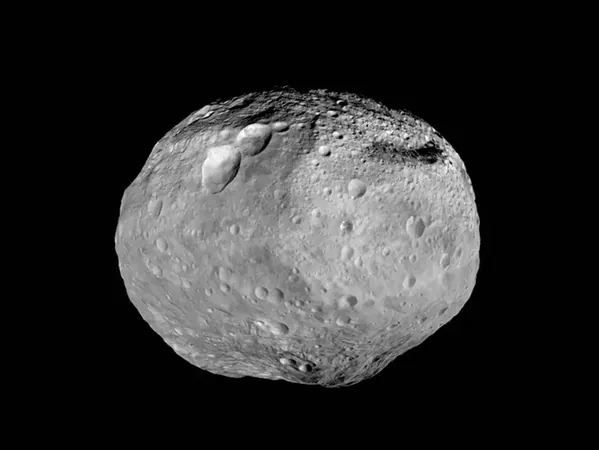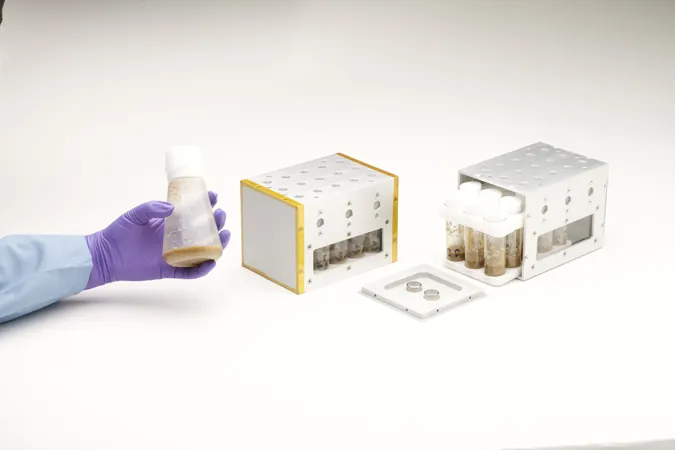
Unveiling the Mysteries of Asteroid Vesta: Astronomers Discover Shocking Truths!
2025-04-30
Author: Liam
Vesta: A Cosmic Enigma Revealed
Asteroid Vesta, an enigmatic object in our solar system, has long captivated astronomers with its unique characteristics. Once thought to lie somewhere between a planet and an asteroid, Vesta has now thrown a curveball, revealing fascinating new insights that contradict previous beliefs.
Revolutionary Discoveries Challenge Old Theories
Vesta, one of the largest entities in the asteroid belt, was previously regarded as resembling primitive Earth, boasting a core, mantle, and crust as if it were a planet in a prolonged state of development. However, recent research spearheaded by scientists at Michigan State University, in collaboration with NASA's Jet Propulsion Laboratory, has unveiled surprising evidence indicating that Vesta lacks these traditional planet-like features.
The Astonishing Absence of a Core
Co-author Seth Jacobson, an assistant professor in Earth and Environmental Sciences at MSU, remarked on the revelation: "The lack of a core was very surprising. It changes our entire perspective on Vesta." The team has proposed two intriguing hypotheses: one suggests that Vesta ceased its differentiation process early, while the other raises the possibility that it originated as a fragment from a larger planetary body during the solar system's formative years.
Asteroids: The Building Blocks of Creation
Most asteroids consist of ancient, non-metallic materials. However, Vesta's surface is distinctively covered in volcanic basaltic rocks—a sign that it may have undergone differentiation much like a planet. NASA's Dawn spacecraft, which meticulously studied Vesta between 2011 and 2012, collected invaluable data and images that have since been thoroughly analyzed.
Data Refinement Leads to Groundbreaking Insights
Lead researcher Ryan Park from JPL highlighted the importance of refining data calibration, which allowed them to align gravity data with imaging results accurately. After almost a decade of meticulous analysis, the team made a pivotal discovery: Vesta's behavior mimics that of a body devoid of a core.
Unlocking Vesta's Complex History
"Our findings indicate that Vesta's geological story is far more intricate than we assumed," Park explained. The team employed techniques involving moment of inertia to estimate Vesta’s internal structure. The results not only underscore the asteroid's complexity but also point to a history marked by significant events such as interrupted differentiation and late-stage collisions.
Looking Ahead: The Quest for More Answers
To unravel the mysteries surrounding Vesta, further research is essential. Certain meteorites found on Earth are believed to originate from Vesta and could hold critical clues. Jacobson confidently remarked, "These meteorites do not show signs of incomplete differentiation, suggesting a deeper narrative." This paves the way for future studies aimed at understanding if chaos during planetary growth contributed to Vesta’s current state.
A New Perspective on Vesta's Meteorites
The study suggests that rather than being remnants of a primordial planet that never formed, Vesta's meteorites may be pieces of an ancient planet that didn’t complete its journey to full formation. This paradigm shift invites exciting new explorations of our solar system's history.
The findings from this research were published in the paper "A Small Core in Vesta Inferred from Dawn's Observations" in Nature Astronomy on April 23, 2025.









 Brasil (PT)
Brasil (PT)
 Canada (EN)
Canada (EN)
 Chile (ES)
Chile (ES)
 Česko (CS)
Česko (CS)
 대한민국 (KO)
대한민국 (KO)
 España (ES)
España (ES)
 France (FR)
France (FR)
 Hong Kong (EN)
Hong Kong (EN)
 Italia (IT)
Italia (IT)
 日本 (JA)
日本 (JA)
 Magyarország (HU)
Magyarország (HU)
 Norge (NO)
Norge (NO)
 Polska (PL)
Polska (PL)
 Schweiz (DE)
Schweiz (DE)
 Singapore (EN)
Singapore (EN)
 Sverige (SV)
Sverige (SV)
 Suomi (FI)
Suomi (FI)
 Türkiye (TR)
Türkiye (TR)
 الإمارات العربية المتحدة (AR)
الإمارات العربية المتحدة (AR)